Resistance Bands for Post Partum Fitness
Post Partum Workouts
Exercising after birth presents a few challenges for new moms, but the largest concern is a condition called diastisis recti, a very common occurrence where the abdominal muscles split to make room for the growing child, and afterwards remain split. It is generally measured in degrees of how many finger-widths apart the muscles are (one to four, four being most severe).
Traditional exercises using weights tend to have the heaviest amount of resistance a the beginning and end of the movements. With resistance bands, the pressure is c even throughout the muscle extension, allowing the user more control and reducing the risk of injury.
How can moms use bands effectively?
Pregnancy and birth can have an impact on all the muscles in a mother's body, with the abdominals taking the most obvious hit. Abdominal muscles support your organs, bladder, and bowel. Traditional exercises like Kegel exercises can be used to strengthen the muscles that support and surround the pelvic organs. Training obliques, your back, and even strengthening your legs can help push your abs back into place without directly exercising your abdominals and this is where resistance training can come into play.
By using resistance to target your obliques you can work on pushing these muscles back together, strengthen your back and increase your post-pregnancy endurance by using consistently resistant weight, at a level you can handle and slowly build over time. This lowers your risk of injury and helps to rebuild your pre-pregnancy fitness levels. Moms can target other muscles as well, upper back to support the baby and legs to build overall endurance.
Resistance band exercises are incredibly versatile, and they can target many parts of the body. With adjustable resistance, you can regain flexibility as well as strength. As with any fitness program, be sure to check with your GP before embarking on a new regimen.



